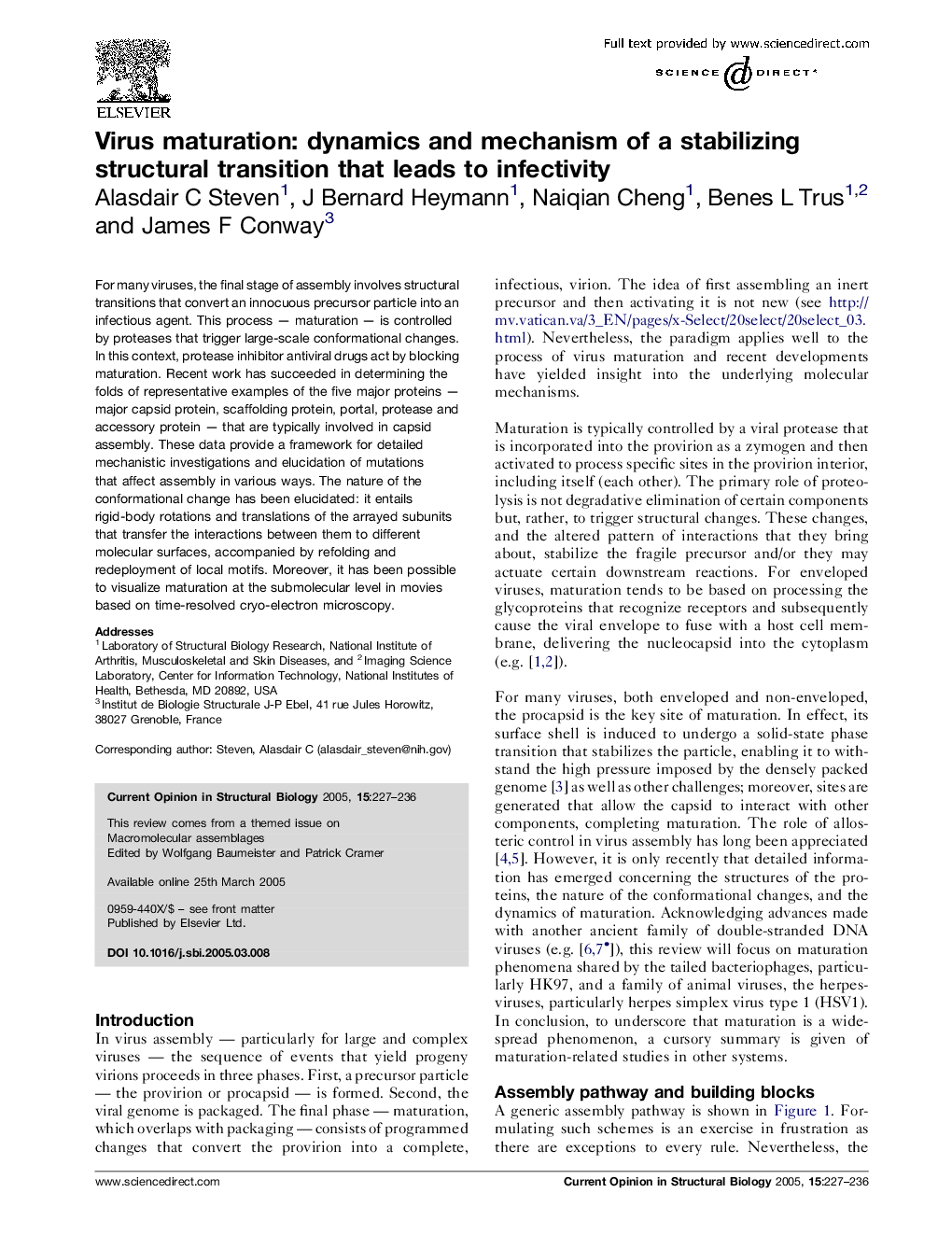| Article ID | Journal | Published Year | Pages | File Type |
|---|---|---|---|---|
| 10822794 | Current Opinion in Structural Biology | 2005 | 10 Pages |
Abstract
For many viruses, the final stage of assembly involves structural transitions that convert an innocuous precursor particle into an infectious agent. This process - maturation - is controlled by proteases that trigger large-scale conformational changes. In this context, protease inhibitor antiviral drugs act by blocking maturation. Recent work has succeeded in determining the folds of representative examples of the five major proteins - major capsid protein, scaffolding protein, portal, protease and accessory protein - that are typically involved in capsid assembly. These data provide a framework for detailed mechanistic investigations and elucidation of mutations that affect assembly in various ways. The nature of the conformational change has been elucidated: it entails rigid-body rotations and translations of the arrayed subunits that transfer the interactions between them to different molecular surfaces, accompanied by refolding and redeployment of local motifs. Moreover, it has been possible to visualize maturation at the submolecular level in movies based on time-resolved cryo-electron microscopy.
Related Topics
Life Sciences
Biochemistry, Genetics and Molecular Biology
Biochemistry
Authors
Alasdair C Steven, J Bernard Heymann, Naiqian Cheng, Benes L Trus, James F Conway,
